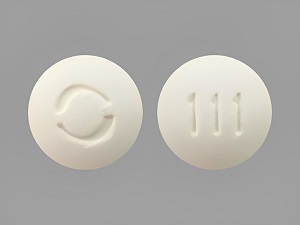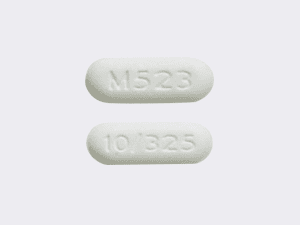Anxiety and panic attacks are two common yet distinct experiences that can significantly impact mental well-being and quality of life. While they share some similarities, understanding their differences is crucial for accurate diagnosis, effective management, and improved mental health support. Let’s delve into the nuances of anxiety and panic attacks, exploring their unique characteristics, triggers, symptoms, and management strategies.
Anxiety: A Complex Spectrum
Anxiety is a multifaceted emotional response characterized by feelings of worry, fear, apprehension, or unease about future events, potential threats, or uncertain outcomes. It exists along a spectrum, ranging from mild anxiety to severe anxiety disorders, such as generalized anxiety disorder (GAD), social anxiety disorder (SAD), panic disorder, and specific phobias. Here are key aspects of anxiety:-
- Persistent Worry and Anticipation: Individuals with anxiety often experience persistent worry, anticipation of negative outcomes, or excessive concern about various aspects of life, including work, relationships, health, and personal safety.
- Physical Symptoms: Anxiety can manifest physically, leading to symptoms such as rapid heartbeat, sweating, trembling, muscle tension, gastrointestinal disturbances, headaches, dizziness, and shortness of breath. These physical manifestations are often referred to as “anxiety symptoms” and can vary in intensity based on the level of anxiety.
- Cognitive Symptoms: Anxiety can affect cognitive functioning, leading to difficulties with concentration, memory, decision-making, and problem-solving. Individuals with anxiety may experience racing thoughts, difficulty focusing, mind blanking, and cognitive distortions such as catastrophic thinking or overestimating threats.
- Emotional Distress: Anxiety is accompanied by emotional distress, including feelings of restlessness, irritability, agitation, apprehension, and a sense of impending doom or danger. These emotional states can interfere with daily functioning and quality of life.
- Behavioral Patterns: Anxiety can influence behavior, leading to avoidance of certain situations or activities perceived as threatening, seeking reassurance, compulsive behaviors (e.g., checking, counting), avoidance of social interactions, and disruptions in sleep or appetite patterns.
- Chronic Stress Response: Prolonged anxiety can trigger a chronic stress response in the body, leading to dysregulation of stress hormones such as cortisol and adrenaline. This ongoing physiological response can impact various bodily systems and contribute to long-term health consequences if left unmanaged.
Panic Attacks: Intense Surges of Fear
Panic attacks are intense episodes of fear or discomfort that arise suddenly and peak rapidly, typically lasting for a few minutes. They are characterized by a surge of overwhelming physical and psychological symptoms that can be distressing and debilitating. Here are key aspects of panic attacks:-
- Sudden Onset: Panic attacks occur suddenly and unpredictably, often without an obvious trigger or specific cause. They can occur in various settings, including during periods of relaxation, stress, or physical activity.
- Intense Physical Symptoms: Panic attacks involve a rapid onset of intense physical symptoms, such as palpitations, sweating, trembling, chest pain, shortness of breath, choking sensations, dizziness, nausea, abdominal distress, and feelings of derealization or depersonalization.
- Psychological Distress: Panic attacks are accompanied by significant psychological distress, including feelings of intense fear, terror, or impending doom. Individuals may fear losing control, having a heart attack, or dying during a panic attack.
- Duration and Peak: The duration of a panic attack is relatively short, typically lasting for a few minutes (rarely exceeding 20-30 minutes). The symptoms peak rapidly, reaching a maximum intensity within minutes before gradually subsiding.
- Post-Attack Recovery: After a panic attack subsides, individuals may experience residual symptoms such as fatigue, emotional exhaustion, muscle tension, and heightened anxiety. However, the acute panic attack symptoms diminish once the episode ends.
Distinguishing Factors: Anxiety vs. Panic Attacks
While anxiety and panic attacks share some common features, several key differences differentiate them:-
- Onset and Duration: Anxiety is characterized by persistent worry and anticipatory anxiety over time, whereas panic attacks occur suddenly and have a relatively short duration (minutes rather than hours or days).
- Intensity of Symptoms: Panic attacks involve intense and overwhelming physical and psychological symptoms that peak rapidly, whereas anxiety symptoms may be less severe and more sustained over time.
- Triggers and Context: Panic attacks can occur without an apparent trigger or in response to specific triggers (e.g., phobias, stressors), whereas anxiety symptoms may be triggered by specific situations, thoughts, or perceived threats.
- Psychological Distress: Panic attacks are accompanied by acute psychological distress, including feelings of terror or impending doom, whereas anxiety may involve persistent worry and emotional discomfort without reaching the intensity of panic attack symptoms.
- Recovery and Post-Event: After a panic attack, individuals may experience post-attack fatigue or emotional exhaustion, whereas anxiety symptoms may persist or fluctuate over time, depending on stressors and coping strategies.
Is panic attack dangerous for health?
After distinguishing about the anxiety & panic attack. Let’s start discussion on how much panic attack is dangerous for health:-
- Not Directly Dangerous: Panic attacks are not inherently life-threatening or harmful to physical health.
- Intense Distress: They can, however, cause intense distress, fear, and discomfort during the episode.
- Physical Symptoms: Panic attacks mimic symptoms of serious health conditions like heart attacks, leading to confusion and anxiety.
- Seeking Medical Evaluation: Individuals experiencing panic attacks may seek medical evaluation to rule out underlying health concerns.
- Impact on Well-Being: While not dangerous, frequent or severe panic attacks can impact mental well-being, daily functioning, and quality of life.
- Effective Management: Managing panic attacks through therapy, medication, stress reduction, and lifestyle changes is crucial for overall health and well-being.
Management Strategies: Addressing Anxiety and Panic Attack
Managing anxiety and panic attacks involves a comprehensive approach that integrates psychological, behavioral, lifestyle, and therapeutic interventions. Here are strategies for addressing anxiety and panic attacks:-
- Cognitive-Behavioral Therapy (CBT): CBT is an evidence-based psychotherapy approach that helps individuals identify and modify maladaptive thoughts, beliefs, and behaviors associated with anxiety and panic attacks. CBT techniques include cognitive restructuring, exposure therapy, relaxation training, and stress management skills.
- Medication: In some cases, medications such as selective serotonin reuptake inhibitors (SSRIs), serotonin-norepinephrine reuptake inhibitors (SNRIs), benzodiazepines, or beta-blockers may be prescribed to manage anxiety and reduce the frequency and intensity of panic attacks. It’s important to use medications as directed and under medical supervision.
- Relaxation Techniques: Practicing relaxation techniques such as deep breathing exercises, progressive muscle relaxation, mindfulness meditation, and guided imagery can help reduce anxiety levels, promote relaxation, and alleviate panic attack symptoms.
- Lifestyle Modifications: Adopting healthy lifestyle habits, including regular physical activity, balanced nutrition, adequate sleep, stress management techniques, and avoiding substance use (e.g., caffeine, alcohol, recreational drugs), supports overall mental health and well-being.
- Mind-Body Practices: Engaging in mind-body practices such as yoga, tai chi, qigong, and biofeedback can promote mind-body awareness, stress reduction, and emotional resilience, contributing to anxiety and panic attack management.
- Supportive Relationships: Building supportive relationships, seeking social support, and connecting with others who understand anxiety and panic attacks can provide emotional validation, encouragement, and a sense of community.
- Self-Care Strategies: Prioritizing self-care activities such as hobbies, creative outlets, nature walks, relaxation breaks, and self-compassion practices enhances emotional well-being, reduces stress, and fosters resilience in coping with anxiety and panic attacks.
What are the symtoms of panic attack ?
Here are the symptoms of panic attack mentioned below:-
- Intense Fear or Dread: Sudden onset of overwhelming fear, apprehension, or a sense of impending doom.
- Rapid Heartbeat (Palpitations): Feeling of a racing or pounding heart, often accompanied by chest discomfort or tightness.
- Shortness of Breath: Difficulty breathing or feeling like you can’t get enough air, leading to rapid, shallow breathing.
- Sweating: Profuse sweating, especially on the palms, forehead, or underarms, even in the absence of physical exertion or heat.
- Trembling or Shaking: Uncontrollable shaking or trembling, typically in the hands or limbs.
- Dizziness or Lightheadedness: Feeling faint, dizzy, or unsteady on your feet, sometimes accompanied by a sensation of spinning (vertigo).
- Choking Sensation: Feeling of choking or tightness in the throat, as if unable to swallow or breathe properly.
- Nausea or Abdominal Discomfort: Upset stomach, queasiness, or abdominal discomfort, often accompanied by a feeling of impending vomiting.
- Hot or Cold Flashes: Sudden sensations of heat or cold, causing flushing or chills throughout the body.
- Numbness or Tingling: Sensations of numbness, tingling, or pins-and-needles in the extremities, such as the fingers or toes.
- Chest Pain or Pressure: Sharp or stabbing chest pain, pressure, or discomfort, which may be mistaken for a heart attack.
- Feeling Detached or Unreal: Sense of detachment from oneself or surroundings, feeling disconnected or detached from reality (derealization or depersonalization).
- Fear of Losing Control or Going Crazy: Overwhelming fear of losing control, going crazy, or doing something embarrassing or harmful.
- Fear of Dying: Intense fear of dying or having a catastrophic event occur, leading to heightened anxiety and distress.
- Post-Attack Exhaustion: After the panic attack subsides, individuals may experience fatigue, exhaustion, or emotional exhaustion due to the intense physical and psychological exertion during the episode.
Conclusion
In conclusion, while anxiety and panic attacks are distinct experiences with unique characteristics, they share common themes of emotional distress, physiological arousal, and impact on daily functioning. By understanding the differences between anxiety and panic attacks, individuals can access appropriate support, develop effective coping strategies, and enhance their overall mental health and well-being. With comprehensive management approaches, including psychotherapy, medication, relaxation techniques, lifestyle modifications, and supportive resources, individuals can navigate anxiety and panic attacks, cultivate resilience, and empower their journey toward mental wellness.











Leave a comment